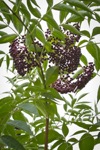Notice (8): Undefined index: geoplugin_countryCode [APP/Controller/AppController.php, line 94]Code Context$Country_code = '';if($ip_data && $ip_data['geoplugin_countryCode'] != null) {$Country_code = $ip_data['geoplugin_countryCode'];$client = null $forward = null $remote = '216.73.216.24' $ip = '216.73.216.24' $ch = unknown $ip_data_in = '{ "geoplugin_status":429, "geoplugin_message": "Blacklisted due to sending too many requests to geoplugin.net. Consider whitelisting your IP or domain", "geoplugin_url": "https://www.geoplugin.com/premium/" } ' $ip_data = [ 'geoplugin_status' => '429', 'geoplugin_message' => 'Blacklisted due to sending too many requests to geoplugin.net. Consider whitelisting your IP or domain', 'geoplugin_url' => 'https://www.geoplugin.com/premium/' ] $Country_code = ''App\Controller\AppController::initialize() - APP/Controller/AppController.php, line 94 App\Controller\ProductsController::initialize() - APP/Controller/ProductsController.php, line 31 Cake\Controller\Controller::__construct() - CORE/src/Controller/Controller.php, line 273 ReflectionClass::newInstance() - [internal], line ?? Cake\Http\ControllerFactory::create() - CORE/src/Http/ControllerFactory.php, line 47 Cake\Http\ActionDispatcher::dispatch() - CORE/src/Http/ActionDispatcher.php, line 91 Cake\Http\BaseApplication::__invoke() - CORE/src/Http/BaseApplication.php, line 235 Cake\Http\Runner::__invoke() - CORE/src/Http/Runner.php, line 65 Cake\Http\Runner::__invoke() - CORE/src/Http/Runner.php, line 65 Cake\Http\Middleware\CsrfProtectionMiddleware::__invoke() - CORE/src/Http/Middleware/CsrfProtectionMiddleware.php, line 104 Cake\Http\Runner::__invoke() - CORE/src/Http/Runner.php, line 65 Cake\Http\Runner::run() - CORE/src/Http/Runner.php, line 51 Cake\Routing\Middleware\RoutingMiddleware::__invoke() - CORE/src/Routing/Middleware/RoutingMiddleware.php, line 168 Cake\Http\Runner::__invoke() - CORE/src/Http/Runner.php, line 65 Cake\Routing\Middleware\AssetMiddleware::__invoke() - CORE/src/Routing/Middleware/AssetMiddleware.php, line 88 Cake\Http\Runner::__invoke() - CORE/src/Http/Runner.php, line 65 Cake\Error\Middleware\ErrorHandlerMiddleware::__invoke() - CORE/src/Error/Middleware/ErrorHandlerMiddleware.php, line 96
| Scientific: | Sambucus canadensis |
|---|---|
| Other: | Elderberry, Elder |
| Family: | Caprifoliaceae |
| Synonym: | Sambucus nigra |
Different varieties of elder tree grow in Europe (Sambucus nigra) & North America (Sambucus Canadensis). Both species are used in herbal medicine and in the food industry. The berries and flowers are used to make wines, cordials, jams and pies. The berries are high in antioxidants and are being researched as a functional food for diabetes and high cholesterol.
Both the berries and flowers are used in herbal medicine to treat allergies and upper respiratory tract infections (URTI) including, colds, flus and sinusitis. Clinical trials support this traditional indication. Their phenolic compounds (flavonoids) have been shown to have an anti-adherance effect against viruses: they attach to viruses and prevent them from adhering to and infecting human cells.
- Extracts have reduced the severity & duration of influenza symptoms. In particular, elderberry extracts are well suited for children because they usually taste sweet and fruity.
Caution: The berries should be cooked to destroy the small amounts of toxic cyanogenic glycosides (sambunigrin).
Respiratory
• upper respiratory tract infections (URTI)
- colds
- influenza
- sinusitis
- rhinitis
• viruses (berries )
• Diaphoretic
• Astringent
• Antiviral
• Antiadherence
• Antirheumatic
• Diuretic
• Antiinflammatory
• Anthocyanin (Fruit)
• Tannins
• Ascorbic Acid
• Flavonoids
• Cyanogenic Glycoside (Unripe Fruit • Destroyed With Heating )
• Tincture (1:5 of flower in 40% EtOH): 2-4 ml tid
• infusion (dried flower): 2 tsp tid
Side effects: May cause severe vomiting and diarrhea (due to cyanogenic glycosides found in the bark, leaves and unripe fruit). Heat will destroy.
Barnes J, Anderson LA, Phillipson JD. Herbal Medicines, 3rd ed. London: Pharmaceutical Press, 2007.
Bone K. Principles and Practice of Phytotherapy. Edinburgh: Churchill Livingstone, 2000.
Bone K. A Clinical Guide to Blending Liquid Herbs: Herbal Formulations for the Individual Patient. St Louis, MO: Churchill Livingstone, 2003.
Brinker F. The Toxicology of Botanical Medicines, 3rd ed. Sandy, Oregon: Eclectic Medical Publications, 2000.
Felter HW, Lloyd JU. King's American Dispensatory. 1898. http://www.ibiblio.org/herbmed/eclectic/kings/main.html. Accessed: August 19, 2006.
Hoffman D. Medical Herbalism. Rochester, Vermont: Healing Arts Press, 2003.
Weiss RF. Herbal Medicine. Beaconsfield, England: Beaconsfield Publishers Ltd, 1988.
Williamson EM, ed. Major Herbs of Ayurveda. Edinburgh: Churchill Livingstone, 2002
Disclaimer: This content is subject to change. The information is intended to inform and educate; it does not replace the medical evaluation, advice, diagnosis or treatment by a healthcare professional. www.nhpassist.com © 2014 NDAssist Inc. and/or its affiliates. All rights reserved.

|
Elderberry, Elder
SummaryDifferent varieties of elder tree grow in Europe (Sambucus nigra) & North America (Sambucus Canadensis). Both species are used in herbal medicine and in the food industry. The berries and flowers are used to make wines, cordials, jams and pies. The berries are high in antioxidants and are being researched as a functional food for diabetes and high cholesterol. IndicationsSign in requiredActionsSign in requiredConstituentsSign in requiredPosologySign in requiredSafetySign in requiredReferencesSign in required |
|---|